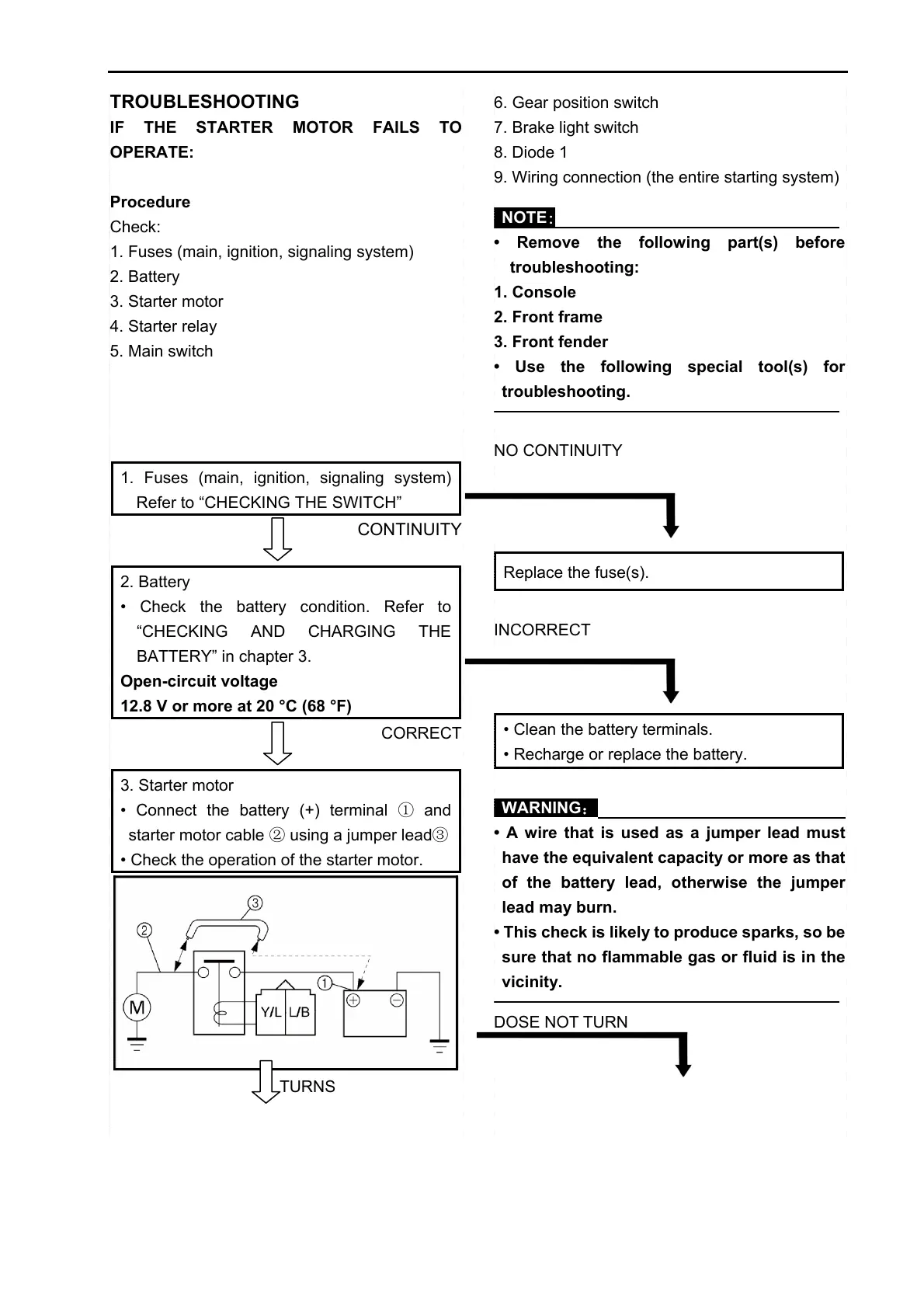ELECTRICAL COMPONENTS
- 299 -
TROUBLESHOOTING
IF THE STARTER MOTOR FAILS TO
OPERATE:
Procedure
Check:
1. Fuses (main, ignition, signaling system)
2. Battery
3. Starter motor
4. Starter relay
5. Main switch
1. Fuses (main, ignition, signaling system)
Refer to “CHECKING THE SWITCH”
CONTINUITY
2. Battery
• Check the battery condition. Refer to
“CHECKING AND CHARGING THE
BATTERY” in chapter 3.
Open-circuit voltage
12.8 V or more at 20 °C (68 °F)
CORRECT
3. Starter motor
• Connect the battery (+) terminal ① and
starter motor cable ② using a jumper lead③
• Check the operation of the starter motor.
TURNS
6. Gear position switch
7. Brake light switch
8. Diode 1
9. Wiring connection (the entire starting system)
NOTE:
• Remove the following part(s) before
troubleshooting:
1. Console
2. Front frame
3. Front fender
• Use the following special tool(s) fo
troubleshooting.
NO CONTINUITY
INCORRECT
WARNING:
• A wire that is used as a jumper lead must
have the equivalent capacity or more as that
of the battery lead, otherwise the
umpe
lead may burn.
• This check is likely to produce sparks, so be
sure that no flammable gas or fluid is in the
vicinity.
DOSE NOT TURN
Replace the fuse(s).
• Clean the battery terminals.
• Recharge or replace the battery.
